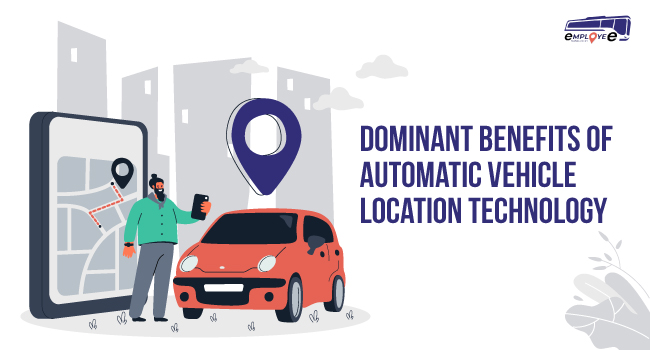Telematics in transportation is indeed a crucial factor when it comes to employee satisfaction. Those who beg to differ might have to face some unpleasant results when it comes to productivity. Imagine a scenario where a fleet driver forgets to pick up an employee and the employee arrives late at the office.
An unhappy start will shade his/her entire day with negative attitude and can directly affect the productivity.
So what would be the solution here?
Ferrying employees especially when it comes to big organization requires a huge amount support from technology, timely action and detailed analysis of the issue. From the technology side, Use of Telematics is the ultimate solution.
However, there are some obvious queries that arise when it comes to Telematics and its role in fleet management.
Let’s address that.
What is Telematics?
Telematics mainly deals with long distance digitized information transfer and is mainly used in when there is a need for actionable information for guidance.
In the case of vehicles, Telematics has the surveillance power by tracking your vehicle. Perks of the system does not end there. Telematics is the combination of GPS system and on—board tools which can map your vehicle position, speed, internal mechanics behavior etc.
Why Telematics in transportation management?
Corporate Employee Transportation is always hectic. Imagine the transportation of 1000 employees to various locations inside a city. It is obvious that the amount spend on the transportation it will be hefty as there are high chances of inefficiency as well as errors. Above all safety is at stake.
The only solution here would be Telematics. We are at a juncture of time where a huge number of corporations have put their complete trust in Telematics when it comes to Employee Transportation. The most astounding feature of this technology is that mobile apps can be incorporated into the system making it compact when it comes to monitoring.
What are the Major issues faces in Employee Transportation?
- Allocating vehicles per shift
- Seat utilization
- Billing and accounting inefficiency
- Route deviation
- Fights between drivers and passengers
- Un-optimized routes
- Inability to verify MIS report
- Travel duration
- Scheduling and cancelling trip or even routes
- Inability to verify the passengers
How can Telematics in transportation be the solution to fleet management issues?
Impeccable security: Complete tracking of vehicle as well as the passengers inside it can be done through a Transportation Management System. Features like Geo Fencing increase the security of the employees to a great amount. Communication facility is also available in the system so that employees can communicate with the manager and drivers and managers can communicate between each other.
Vehicle Maintenance: Various diagnostic tools installed (Upon the choice of the customer) along with the GPS tracker in a Telematics system can notify the managers as well as the drivers for various purposes. For instance, if run-time of an engine is above the input time of the system. Notification will be send to both the driver as well as the manager. In short, in accordance with the input data the system has the ability to notify users so that action can be taken to save money.
Fuel Usage: Fuel is indeed the most costly aspect of a fleet. However, a considerable amount of money on fuel can be saved by turning off the vehicles when the engine is in idle mode. Most of the drivers fail to do it no matter what. Telematics system installed in a vehicle can notify a driver to turn off the vehicle not only in this condition but also when the vehicle is speeding beyond the prescribed level.
Routing: Perfect routing is the key to efficiency in a fleet. Nowadays Telematics are so advanced that they have the ability to predict the optimum route for a journey with the help of historical data that has been collected over time from each employee and cutting edge AI (Artificial Intelligence). Advanced Transportation Management systems only require address of an employee to come up with an optimized route.
GPS Tracking: The most astounding feature of a Telematics system is its GPS capability. Not just for tracking but also for monitoring the vehicle real-time or non real-time. GPS also gives a fleet the capability of geo-fencing which is crucial when it comes to security.
What are the benefits of Telematics technology in Employee Transportation?
Read Also: “Dominant Benefits of Automatic Vehicle Location Technology”
Steep rise in efficiency: Proper communication, optimized routes, better driving habits etc. Is one of the guaranteed results of a Telematics Transportation Management System? This will have a direct effect on efficiency of any fleet.
Better Safety: Drivers are well aware that they are being tracked continuously and it evokes a sense of vigilance inside them and they will act in accordance with the security standards of an organization. This can also bring the down the accidents, speeding tendency as well as increase proper vehicle maintenance inside the fleet. This improved safety will ensure a positive impact on employee feedback tests.
Go Green: If the efficiency of fleets increases more people will chose the company transportation. Thus, carbon emissions caused by a company can be reduced to a great amount. This helps any company to project an environment friendly image in front of public.
Save Money: Idling of engine and driving more distance due to un-optimized routes even though it may sound not much of a deal when it comes to cost it can be hefty in accordance with the strength of organizations. This cost can be cut down completely after the installation of a Telematics system. Scheduled and proper notification of vehicle maintenance will also result in increased life and wear and tear of vehicle parts.









